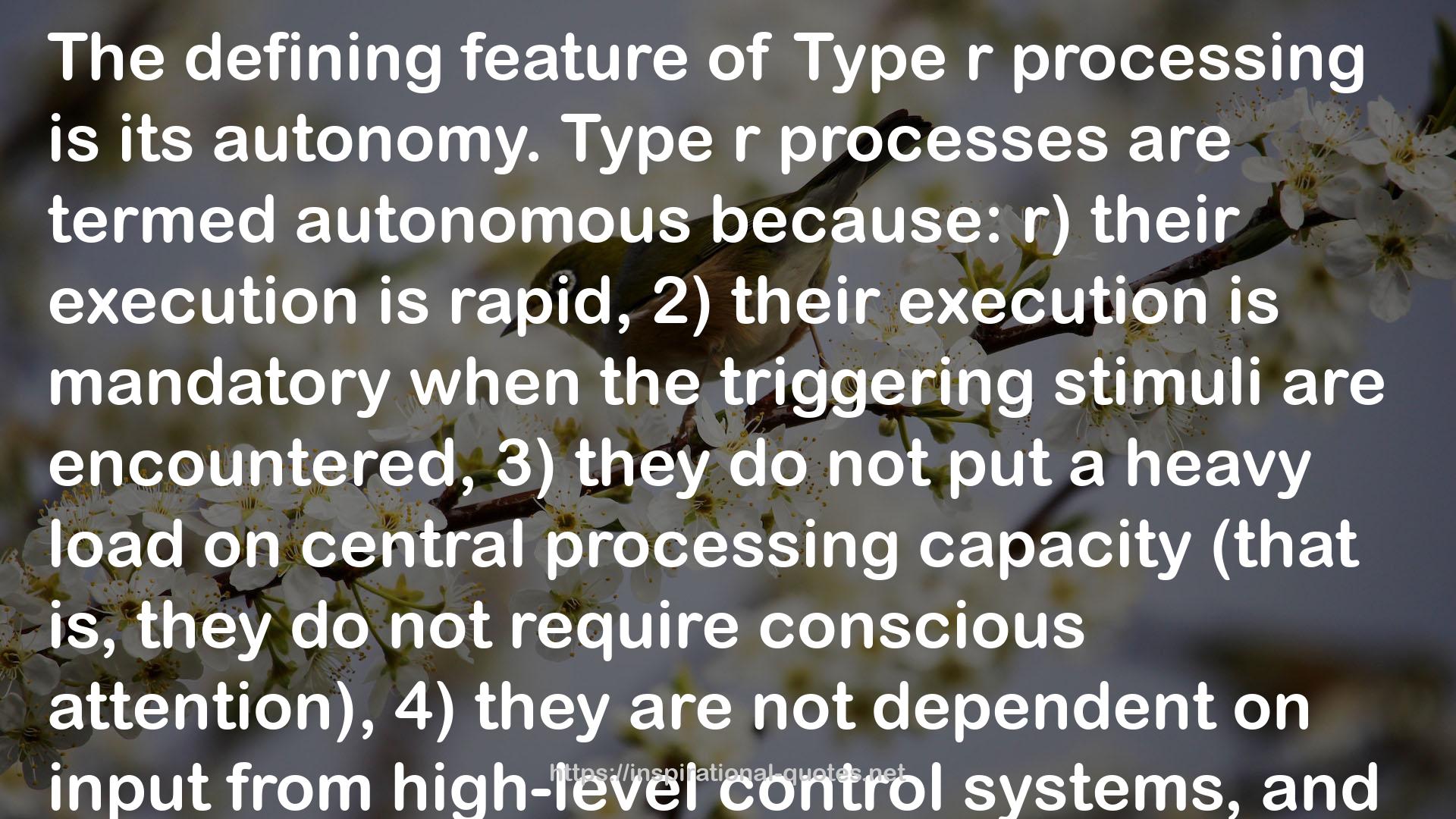" The defining feature of Type r processing is its autonomy. Type r processes are termed autonomous because: r) their execution is rapid, 2) their execution is mandatory when the triggering stimuli are encountered, 3) they do not put a heavy load on central processing capacity (that is, they do not require conscious attention), 4) they are not dependent on input from high-level control systems, and 5) they can operate in parallel without interfering with each other or with Type 2 processing. Type i processing would include behavioral regulation by the emotions; the encapsulated modules for solving specific adaptive problems that have been posited by evolutionary psychologists; processes of implicit learning; and the automatic firing of overlearned associations 4 Type i processing, because of its computational ease, is a common processing default. Type i processes are sometimes termed the adaptive unconscious in order to emphasize that Type i processes accomplish a host of useful things-face recognition, proprioception, language ambiguity resolution, depth perception, etc. -all of which are beyond our awareness. Heuristic processing is a term often used for Type i processing-processing that is fast, automatic, and computationally inexpensive, and that does not engage in extensive analysis of all the possibilities.
Type 2 processing contrasts with Type I processing on each of the critical properties that define the latter. Type 2 processing is relatively slow and computationally expensive-it is the focus of our awareness. Many Type 1 processes can operate at once in parallel, but only one Type 2 thought or a very few can be executing at once-Type 2 processing is thus serial processing. Type 2 processing is often language based and rule based. It is what psychologists call controlled processing, and it is the type of processing going on when we talk of things like "conscious problem solving. "
― Keith E. Stanovich , What Intelligence Tests Miss: The Psychology of Rational Thought
